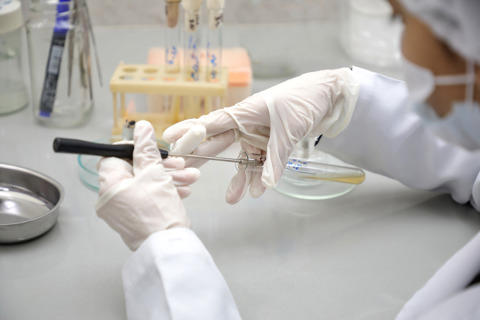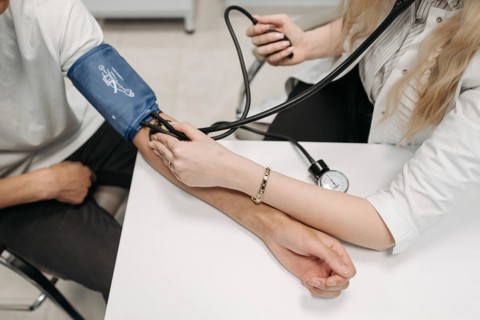
Working from home the European Association for the Study of Diabetes annual conference becomes a virtual reality - Research blog report from Day One
DRWF Research Manager Dr Eleanor Kennedy reports from the opening day of the 56th annual meeting of the European Association for the Study of Diabetes, this year presented as a virtual event.
The European Association for the Study of Diabetes (EASD) annual conference is one of my favourite conferences. It is a peripatetic one, moving around Europe to a different country every year. In the last few years, we’ve been in Lisbon, Berlin and Barcelona.
This year?
Well, I’m at home, sitting at my kitchen table, following everything online because the ongoing Covid-19 pandemic has forced everyone to rethink travelling and large get-togethers!
Much like the recent American Diabetes Association meeting, EASD has had to move its entire congress online.
The bad news is that this high-tech, avatar-driven world is a steep learning curve for many of us over a certain age. The good news is that my avatar is a slim, size 8 – perhaps the easiest weight-loss programme in (virtual) existence!

EASD highlights and introduction to European Diabetes Forum
The first day of the congress dawns, as it always does, with the Presidential Address. Professor Stefano Del Prato, EASD’s current president, walks the worldwide audience through the highlights of the organisation’s successes over the past year and introduces us to a whole new area of interest – the European Diabetes Forum (EUDF).
The European Diabetes Forum aims to improve outcomes for people with diabetes and unite stakeholders from across the diabetes landscape in Europe. This includes policy makers, research, scientific societies, patient organisations, nurse associations, institutions connected to diabetes-related co-morbidities, industry, governments, regulators, payers, and many more. And all of this activity is being designed and evolving to enable healthcare systems to cope with the diabetes pandemic, while achieving the best possible outcomes for patients.
After that, I take a “walk” across to the EASD plaza area where many of these patient organisations have small stands to allow those of us attending to look at the work each of them is doing to improve patient outcomes in their respective countries. From Albania to France and Georgia to Japan, there are many national diabetes associations here.
And two of the issues that affect their audiences with diabetes on a daily basis are diet and heart disease both of which are covered in some depth on the first day of the conference.
Putting type 2 diabetes into remission
The DiRECT (Diabetes Remission Clinical Trial) study pioneered by Professors Roy Taylor and Mike Lean has been one that has really captured attention on the world’s diabetes stage. What started out as a small, pilot study in just a handful of people, has subsequently blossomed into what many feel is a game-changer.
The much bigger DiRECT clinical trial was set up to investigate whether offering an intensive programme for weight loss and weight-loss maintenance would be advantageous for people with type 2 diabetes. Participants were recruited only via general practice.
All participants were followed for several years, to see how many went into remission and how that related to their weight. A percentage of the participants also underwent detailed tests concerning the amount of fat in their liver and pancreas, and some of this data was presented by Professor Taylor (a previously DRWF-funded researcher).
With some impressive morphology slides, he demonstrated that, over two years of remission, the usually small pancreas seen in people with established type 2 diabetes increases in volume, the irregular pancreas border gradually returns to normal and that these changes follow a return of insulin section with a concomitant decrease in intrapancreatic fat content.
Interestingly, Professor Taylor concluded that it was very probable that, the same changes, but in reverse order, could precede onset of type 2 diabetes.

Improved blood pressure could lower risk of cardiovascular disease for people living with diabetes
And the day rounded off with the 35th Camillo Golgi Prize Lecture, this year awarded to Professor Naveed Sattar from Glasgow who gave a typically upbeat presentation on the cardiovascular risk in people with diabetes.
Paying generous tribute to the work of his colleagues and co-workers as well as to others working in the field around the world, Professor Sattar repeatedly pressed home the terrible significance of type 2 for health and mortality – doubling cardiovascular risk.
However, he also gave cause for hope, emphasising the extent to which earlier diagnosis, lower glucose and improved blood pressure and lipid therapy have managed to lower that risk over recent years.
For every decade earlier that you develop diabetes, you lose four more years of life expectancy, so we need to focus more on weight-losing modalities in people with younger onset type 2 diabetes. We need to treat blood pressure more aggressively in younger people with type 2 diabetes.
Covid-19 and vulnerability of people with diabetes
As so often during this year’s meeting, Covid-19 was a looming presence. While acknowledging the particular vulnerability of people with diabetes, as people whose systems are already compromised, to the ravages of a hyperimmune response, Professor Sattar also found a more optimistic note on which to finish Day One of the conference – with the hope that the experience of Covid-19 might finally persuade policy makers to see tackling obesity and diabetes as a matter of urgency.
Visit the European Association for the Study of Diabetes annual meeting 2020 website
Further reports to follow – visit DRWF news page
Support DRWF by making a donation here
Find out more about DRWF-funded research here
Find out more about DRWF fundraising here
For latest update follow DRWF on Facebook, Instagram and Twitter
To receive the charity’s latest bulletins as they become available, please sign up here
Read DRWF diabetes information leaflets here
Join the Diabetes Wellness Network here
I would like to make a regular donation of
I would like to make a single donation of
There are lots of ways to raise money to support
people living with all forms of diabetes.
Bake, Swim, Cycle, Fly ... Do It For DRWF!
Fundraise with us
Recent News


